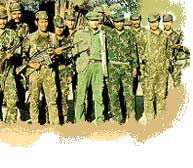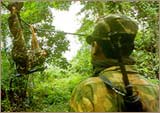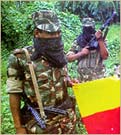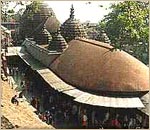
|
HOME |
NEWS |
REDIFF DIARY
|
Anita Bora |
|
Read Part 1 of this diary. During winters, when the temperature fell to zero and below, we used to drive down to Guwahati, which was just three hours away. This was something we looked forward to. It was quite a relief to be in warmer climes. Also, it gave us a chance to meet all our cousins, aunts and uncles. It was on these trips that we witnessed what was the beginning of the Assam agitation. To us children it was exciting -- we got to light fires and shout slogans against the government. We had absolutely no idea that those events bore the seeds of a bloody insurgency. During those years, the 1979-formed and now-banned militant outfit United Liberation Front of Asom was increasingly making its presence felt, I recollect. It was only after we shifted from Shillong to Guwahati that we slowly began to understand the politics involved. We began to hear more of agitating outfits -- Asom Gana Parishad, All-Assam Students' Union and, of course, the ULFA.
But somewhere down the line, the organisation began to lose its focus. Suddenly, the ULFA was involved in too many anti-social activities like kidnapping of innocent civilians, bombings, extortion and murders. People began to feel that their support was misplaced. One incident that went a long way in fuelling this feeling was the killing of Sanjoy Ghose, the social worker from Majuli. The ULFA claimed that he fell to his death from a cliff. Many Assamese youth were joining the outfit for reasons that were not totally related to its cause. It was a known fact that the ULFA facilitated access to money and cars. This was a great attraction to many youngsters. Many of the ULFA leaders are now residing outside India, leading luxurious lives, operating through misguided young men and women. Today, the political and social fabric of Assam is under great duress. The state is rich in natural resources like oil and tea. And it is the only region in the world that cultivates golden silk, from which the famous muga silk is produced. Yet, the political situation has set back development in the state by at least a decade.
The city of Guwahati is nothing like it was 10 years ago. On the surface, it's life as usual. But underneath is a festering sore. People are disillusioned -- about the government, their leaders, the ULFA, the SULFA (the surrendered fraternity) and their lives in general. If development is linked to the number of cars on the streets, Guwahati would definitely qualify. But in any other sense, there has been little or no progress. Businessmen find it difficult to operate because of extortion, bureaucracy and related problems. There is rampant corruption. And the infrastructure is so bad that the man on the street has literally no place to walk -- footpaths are non-existent and the roads aren't wide enough to hold more than two cars. Listen to a friend of mine, who is an Assam government employee: "I arrive at 11 am and leave by 2.00 pm and I still get a good paycheque at the end of the month. So why should I work harder? "Assam is basically for lazy people. Slow and easy, that's how everyone likes it here, and if you stay here long enough even you will begin to get used to this pace and way of life."
Many of the young ULFA militants who have surrendered in the recent years now operate as SULFA -- Surrendered ULFA. I asked a resident what this meant to the people. "Their activities -- terrorism and extortion -- have remained the same, it's just that now they are more overt than covert," he replied. When people ask me about the North-East, I am at a loss for words. How do I describe what it once was when I was a young child and what it has become today? The dense jungles of Nagaland, now infested with NSCN militants, the scenic town of Itanagar in Arunachal Pradesh, the festive dances of Mizoram, Rohtak lake in Manipur, and the famous Kaziranga Wildlife Sanctuary in Assam, home to the one-horned rhino... These are sights that visitors will probably never witness again. At least, not in their true glory. Anita Bora, now settled in Bombay, makes it a point to visit Assam once every year.
|
|||||
|
HOME |
NEWS |
CRICKET |
MONEY |
SPORTS |
MOVIES |
CHAT |
BROADBAND |
TRAVEL ASTROLOGY | NEWSLINKS | BOOK SHOP | MUSIC SHOP | GIFT SHOP | HOTEL BOOKINGS AIR/RAIL | WEDDING | ROMANCE | WEATHER | WOMEN | E-CARDS | EDUCATION HOMEPAGES | FREE MESSENGER | FREE EMAIL | CONTESTS | FEEDBACK |
|||||





